RIDGE grantees have used a wide variety of primary and secondary data resources. Within the scope of a small grants program, we recognize that secondary data sources and small-scale primary data sources are more suitable than large-scale primary data collection. This page provides an introduction to some of the available secondary data resources.
With support from USDA, the National Academies in 2020 published a report on A Consumer Food Data System for 2030 and Beyond. It summarizes the strengths and limitations of several types of secondary data, including the following:
- Nationally representative survey data. Major publicly available surveys include the Current Population Survey (CPS) for research on poverty, unemployment, and household food security; the Survey of Income and Program Participation (SIPP) for longitudinal insight into program entry and exit; the Food Acquisition and Purchase Survey (FoodAPS); the Nutrition and Health Examination Survey (NHANES), and many others.
- Program and administrative data. FNS provides national- and state-level program data. For research at the household or participant case level, researchers generally must have a data sharing agreement with a state agency, although there is a publicly available data set with Quality Control (QC) data for SNAP. USDA also provides data files on policy changes in SNAP, authorized retailers for SNAP, and other topics related to program operation.
- Commercial data. There is a long history of using commercial data files, such as scanner data from IRI InfoScan, which may require either purchase from a commercial vendor or a use agreement with USDA. When using such data in RIDGE grant proposals, it unfortunately is generally necessary to already have such a use agreement before submitting a proposal. Sometimes, interesting aggregated data that originated with these commercial scanner data sources may be publicly available. For example, USDA’s Purchase to Plate data tool, which provides nationally representative prices for each NHANES food code, is based on IRI InfoScan data and is free and publicly available.
One good way to generate ideas for promising secondary data sources is to review past RIDGE projects, on this website’s accomplishments menu tab and also in a searchable database available from USDA/ERS.
